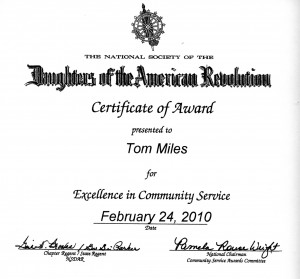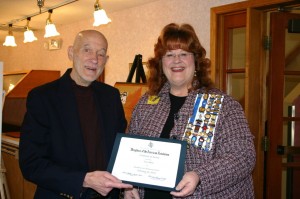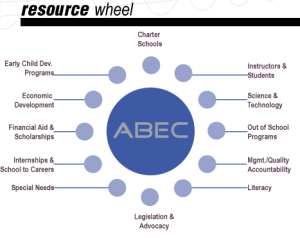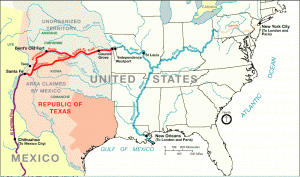With a little bit of work you can use this post to locate the name, address and telephone number of an actual person who should be willing to listen to the situation you are having problems with. They may be able to either do something about it, direct you to someone who can, or note it for discussion at their next problem-solving meeting. As a reminder for how this works, see my earlier post, Bitching Doesn’t Work. Continue reading
Tag Archives: Albuquerque
Kids who graduate in NM may help cut crime
ALBUQUERQUE (KRQE) – A new plan to cut crime in New Mexico looks at getting more kids to graduate from high school.
One economist estimates if five percent more young men graduated in New Mexico, It could save the state $38 million in prison and jail costs.
Nobel Prize winning economist James Heckman says kids who graduate are less likely to be arrested and sent to jail.
Heckman also adds if that same five percent of high school grads also went to college, their combined income would be $20 million higher than if they hadn’t gone to college.
Read complete article here
ABQ Running Start for Careers, a new high school retention and workforce development program.
The goal of Running Start for Careers is to give students direct entry into industry-developed and industry-taught programs in career development areas during their 11th and 12th grade years.
Running Start will allow electives to be utilized so that students who participate in approved programs will be able to graduate with the rest of their classmates. Continue reading
Just added: ABEC’s Amazing Resource Wheel
ABEC Resource Wheel – This resource/networking wheel is an amazing one-stop information and learning resource. It describes and links various resources, groups, and topics supporting students, parents, business, and non-profits interested in improving education. To use it, just click the image, sit back, poke away!
The Albuquerque Business Education Compact (ABEC) is a partnership of business, education and local government in the greater Albuquerque, New Mexico community.
Albuquerque Sandia Foothills flowers blooming (video)
In Albuquerque in August of 2004, a perfect coming together of elements occurred, the rains, the season, the temperature … and the Sandia Foothills blossomed!
This 3 minute video was created in July/August 2010, 6 years later. Since 2004 there has been no similar set of circumstances and no similar blossoming.
I literally did not know when I took these photos that I was capturing such a singular or once-in-a-long-time event. I hope you enjoy watching this video as much as I did making it.
If you do like it, please click the “like” button and leave a comment.
Thanks, and happy Fall 2010.
DAR Community Service Award for creating The Albuquerque Tricentennial Timeline
I was greatly pleased and honored last Wednesday, to be given the DAR Community Service Award for creating the Albuquerque Tricentenial Timeline.

 Casandra Meyers-Warner, New Mexico State 1st Vice Regent and Past Regent of the Charles Dibrell Chapter presenting the certificate.
Casandra Meyers-Warner, New Mexico State 1st Vice Regent and Past Regent of the Charles Dibrell Chapter presenting the certificate.
From the program notes: “The Charles Dibrell Chapter of the Albuquerque DAR is pleased to present Tom Miles the DAR Community Service Award for his creation of the Albuquerque Tricentennial Timeline. The timeline itself depicts 600 years of Albuquerque history in a large 4 foot x 16 foot poster-format piece mounted in the East Wing of the Albuquerque Convention Center and the Passenger Waiting Lounge at the Sunport. It depicts and relates interesting historical events throughout the world as well as describing the many and varied ethnic and cultural arrivals and contributions to Albuquerque over this 600 year period. The Timeline Project took two years to complete and required Tom to meet repeatedly with the University of New Mexico History Department, the State Folklorist, the State Historian, the Indian Pueblo Cultural Center, the Spanish Colonial Research Center and the National Hispanic Cultural Center. For graphics, Tom worked with Sandia Labs Graphics Department. The timeline was considered to be sufficiently interesting and valuable that the Tricentennial Committee contracted for the printing of a number of smaller, 2 foot x 4 foot, copies which were given to the Albuquerque Public School, Parochial and selected private high school and middle schools throughout Albuquerque to facilitate teaching Albuquerque, New Mexico, US and world history and Social Studies. It is impossible with a photo to show the importance of this work. You may want to view on line two very informative YouTube videos produced by Tom: “5 Perspectives on Albuquerque, NM” and “Mexican Immigration Through New Mexico and the Southwest.”
How you got to Albuquerque in 1850
My sister mailed me this interesting newspaper nugget describing stagecoaches, stagecoach fares and travel via the Santa Fe Trail from “civilization” to “The Wild West” circa 1850:
“Crossing the plains from Independence, Mo., to New Mexico in the 1850’s cost $150 in the winter. Summer special rate was $125. Coaches with mail and passengers left Independence and Santa Fe the first day of each month. Usually they met at the Arkansas River crossing. Passengers were limited to 50 pounds of baggage. Any excess cost $.50 a pound.
“A second coach accompanied the mail-passenger vehicle. It carried baggage, supplies, feed for the mules and food for the passengers. Each coach had two drivers and six mules. The fare included food, but passengers had to help prepare meals. They also collected wood or buffalo chips with which to build the fire.”
A couple of asides: the trip could take from 8 to 10 weeks; that $150 would be $3,836 in 2008 dollars adjusted for inflation, and 160 years later, the same trip costs about $200 for a two-and-a-half-hour, one-stop flight from Kansas City to Albuquerque, with the added benefit that you don’t have to gather buffalo chips, build a smoky fire and cook your own meal. But … you still have to pay for extra baggage. The Santa Fe Trail is marked in red on the map (source: Wikipedia).


